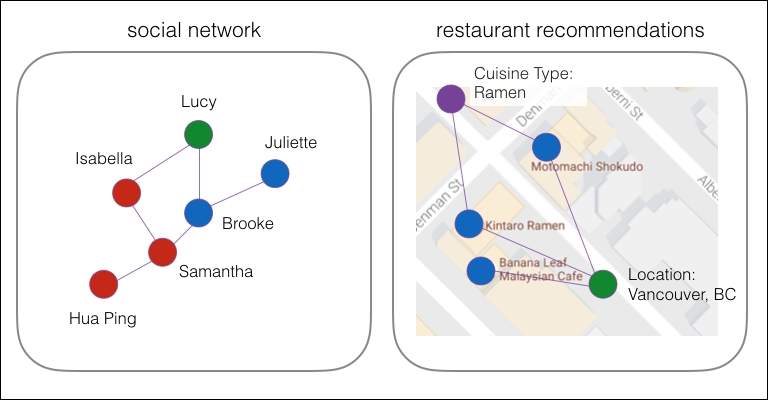Chapter 7. GraphFrames
Graphs are an interesting way to solve data problems because graph structures are a more intuitive approach to many classes of data problems.
In this chapter, you will learn about:
Why use graphs?
Understanding the classic graph problem: the flights dataset
Understanding the graph vertices and edges
Simple queries
Using motif finding
Using breadth first search
Using PageRank
Visualizing flights using D3
Whether traversing social networks or restaurant recommendations, it is easier to understand these data problems within the context of graph structures: vertices, edges, and properties:

For example, within the context of social networks, the vertices are the people while the edges are the connections between them. Within the context of restaurant recommendations, the vertices (for example) involve the location, cuisine type, and restaurants while the edges are the connections between them (for example, these three restaurants are in Vancouver, BC, but only two of them serve ramen...







































































